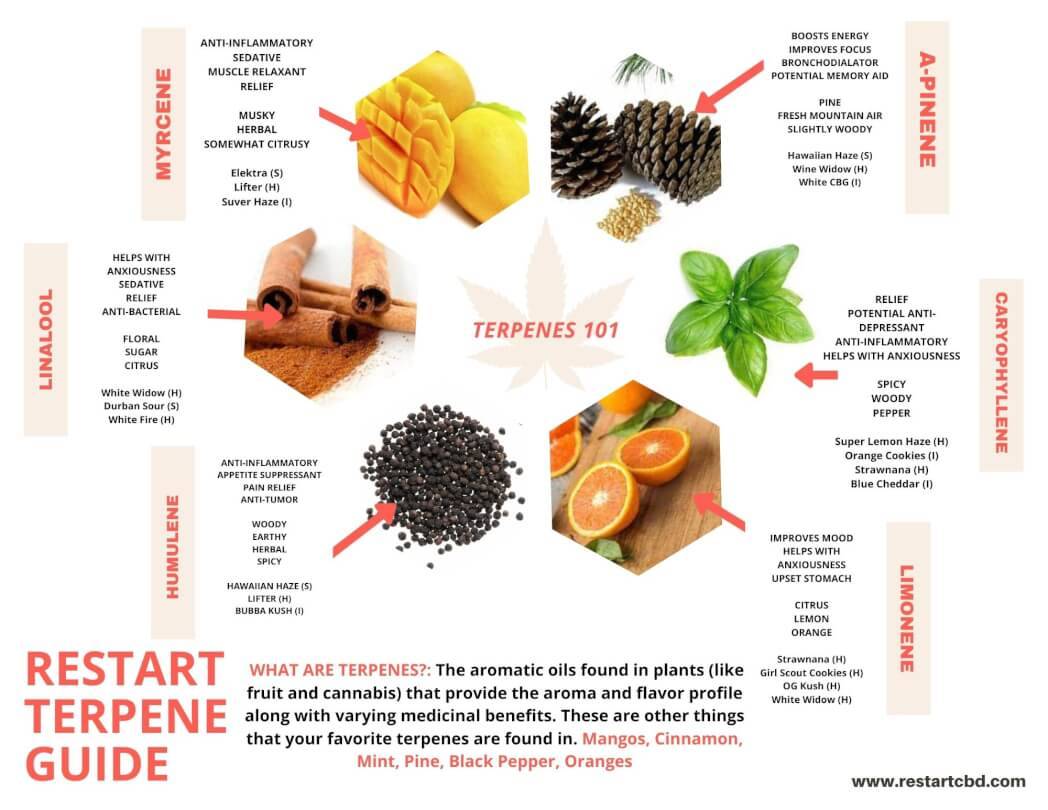
Terpenes 101: A Beginner's Guide to these Aromatic Compounds
Introduction to Terpenes
What Are Terpenes?
Terpenes are aromatic compounds found in a variety of plants, responsible for their distinct fragrances and flavours. These natural molecules are not just about the pleasant scents; they play crucial roles in the plant's survival and interaction with the environment. For example, the citrusy aroma of lemon is due to limonene, a terpene that can deter pests and attract pollinators. Interestingly, terpenes are also abundant in essential oils, and many people utilize them in their daily lives, be it for aromatherapy or adding a fragrant touch to their homemade products.
Importance of Terpenes in Nature
In nature, terpenes serve several vital purposes, including:
- Defence Mechanism: Many plants produce terpenes to ward off herbivores and pathogens.
- Attracting Pollinators: These compounds can attract beneficial insects, ensuring reproduction.
- Ecological Significance: They participate in plant communication, signaling distress to nearby plants when threatened.
Just like how a garden thrives on diversity, our understanding of terpenes can open doors to more functional drinks and products that enhance well-being through nature's bounty.

Types of Terpenes
Common Terpenes Found in Plants
As we dive deeper into the fascinating world of terpenes, it’s essential to highlight some of the common ones you might encounter. Here are a few:
- Limonene: Found in citrus fruits, limonene has a refreshing scent and is often used in cleaning products.
- Pinene: This terpene gives pine trees their distinctive smell and can be found in rosemary and basil as well.
- Myrcene: Common in mangoes and hops, myrcene is known for its earthy aroma and is believed to promote relaxation.
Effects of Different Terpenes on Humans
Terpenes do more than just smell good; they can significantly impact our well-being. Here’s how some of them affect us:
- Limonene: May elevate mood and reduce stress.
- Pinene: Can enhance memory retention and alertness.
- Myrcene: Often associated with sedative effects, making it helpful for sleep.
Think of terpenes as nature’s little helpers; they enhance not only the plant world but can also play a role in our functional drinks and holistic health practices. Understanding these compounds allows us to harness their benefits in everyday life.

Production and Extraction of Terpenes
Natural Sources of Terpenes
To truly appreciate the magic of terpenes, we must look at where they come from. Numerous plants produce terpenes, making them quite diverse. Some of the most common sources include:
- Citrus Fruits: Oranges and lemons are rich in limonene.
- Herbs: Rosemary and basil contain pinene and myrcene, which contribute to their aromatic profiles.
- Flowers: Lavender is filled with linalool, noted for its calming effects.
Many people enjoy incorporating these plants into their diets or daily routines. For instance, sipping on a calming chamomile tea infused with herbs can be a delightful way to unwind.
Methods for Extracting Terpenes
When it comes to harnessing these valuable compounds, several extraction methods are utilized:
- Steam Distillation: The most common method, using steam to separate terpenes from plant material.
- Cold Pressing: Often used for citrus peels, this method extracts oils without heat, preserving flavor.
- Solvent Extraction: Involves using a solvent to dissolve terpenes, followed by filtration and evaporation.
Each method has its merits, allowing us to enjoy terpenes in everything from functional drinks to essential oils, enriching our lives with nature's essence.

Uses of Terpenes in Various Industries
Terpenes in Aromatherapy
The world of aromatherapy has embraced terpenes as key players in promoting wellness. Many essential oils are rich in these compounds, which are believed to influence mood and mental clarity. For instance, lavender oil, packed with linalool, is famed for its calming properties. Here are a few other notable terpenes used in aromatherapy:
- Limonene: Often used to uplift mood and create a cheerful atmosphere.
- Pinene: Known for promoting alertness and enhancing memory.
People often find that incorporating these oils into their routines—whether through diffusers or topical applications—can enhance relaxation and reduce stress. It’s amazing how a simple scent can transform a room!
Terpenes in Food and Beverages
Terpenes also play a significant role in the food and beverage industry. They are responsible for the aromatic flavors we enjoy in a wide array of products. For instance:
- Citrus Soda: Flavors derived from limonene provide that zesty kick.
- Craft Beer: Hoppy beers often contain myrcene and humulene, contributing to their distinctive smell and taste.
Utilizing terpenes in functional drinks not only enhances flavor but also adds potential health benefits, making your beverage experience both delightful and refreshing.
Health Benefits of Terpenes
Anti-inflammatory Properties of Terpenes
One of the most impressive aspects of terpenes is their anti-inflammatory properties. Various studies have suggested that specific terpenes can help reduce inflammation, making them valuable allies in managing pain and discomfort. For instance:
- Myrcene: Known for its sedative effects, myrcene also exhibits significant anti-inflammatory properties.
- Caryophyllene: Unique in that it interacts with cannabinoid receptors, this terpene offers promising potential in alleviating inflammation and pain.
Many people incorporate terpene-rich foods or essential oils into their routines to leverage these benefits. For example, a ginger tea enriched with essential oils might help soothe inflammation after a workout.
Therapeutic Effects of Terpenes
Beyond inflammation, terpenes offer a range of therapeutic effects that can improve overall well-being:
- Limonene: Frequently linked to mood enhancement and stress relief, limonene encourages a positive mindset.
- Linalool: This soothing terpene is great for promoting relaxation and aiding sleep.
As people seek natural remedies for common ailments, terpenes present themselves as attractive solutions, found in functional drinks and wellness products that not only delight the senses but also support health.
Terpenes in Cannabis
Terpenes Found in Different Cannabis Strains
In the cannabis world, terpenes are not just additional compounds; they contribute significantly to the unique characteristics of each strain. These aromatic compounds create the distinctive scent and flavor profiles that cannabis enthusiasts cherish. For example:
- Skywalker OG: Features myrcene, giving it an earthy, musk-like aroma that many find soothing.
- Strawberry Cough: Contains high levels of caryophyllene, offering a sweet, berry-like scent combined with potential anti-inflammatory benefits.
Personal preferences often lead consumers to select specific strains based on their desired effects, whether for relaxation or creativity.
The Entourage Effect: Interaction of Terpenes and Cannabinoids
What truly sets cannabis apart is the “entourage effect,” which refers to the synergistic interaction between cannabinoids and terpenes. This phenomenon suggests that terpenes can enhance or modify the effects of cannabinoids like THC and CBD.
- For instance, while THC is known for its psychoactive properties, terpenes like pinene can help mitigate the associated anxiety some users experience, creating a more balanced experience.
This intricate dance of compounds makes exploring different strains an exciting journey—one that can lead to discoveries of both flavour and therapeutic potential. By understanding these interactions, users can make more informed choices about their cannabis experience.


